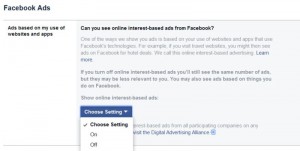— May 26, 2019
Survey emails are one of the best ways to get customer information straight from the source. But times are changing, and getting your customer’s attention over email is difficult. 20 years ago, when the world was just discovering the email, there wasn’t a whole lot more to do than simply sending your email. These days, we get bombarded with so many messages it’s hard to keep up with everything or know what’s worth looking at in the first place. Quite simply, your customers are overwhelmed.
There are about 2.2 billion email users in the world and around 100 billion emails sent a day. The reality is that anyone you’re hoping to talk to has a ton of others also vying for their attention. There’s so much noise online it can be extremely difficult to get anyone’s attention. Even that of a current customer.
In this article, we cover 5 ways to improve your survey emails. With these tips you’ll be able to cut through the noise, gain more insight, connect deeper with your customers, and start down the path towards more loyal customers.
1. Have a strong subject line
The very first obstacle to overcome with an email survey is getting the email opened in the first place. In order for that to happen, you need to have a strong subject line. If you’re not able to pique your customer’s interest right away, your email may be forgotten or, worst-case-scenario, swiftly deleted.
Consider personalizing your subject line. Most CRMs or survey tools like GetFeedback have an option to add a merge tag, or something similar, that allows you to automate the process.
Research from Experian found that personalized email subjects lines had 29% higher unique open rates and 41% higher click-through rates. Using your customer’s name helps the message feel customized and that you’re looking for their feedback, specifically. It’s not just another form email coming to their inbox asking for their time.
Another way to improve your subject line is by shortening it. 68% of emails are opened on mobile devices, according to Campaign Monitor. Since most mobile devices won’t show more than 60 characters, it’s incredibly important to make sure you keep the subject line as concise as possible.
The subject line of your email is, basically, the introduction to your survey. Having a strong first impression helps the overall success of your campaign.
PRO TIP: Be sure your survey is optimized for mobile. If your customer is viewing the email on their mobile device, chances are they’re interested in completing the survey on the same device. Some tools even let you start the survey directly in the email, which is most ideal.
Key takeaways
- Personalize your subject line.
- Be concise and try to keep it below 60 characters.
- Use it as a way to introduce the survey.
2. Explain why you’re conducting the survey
As we covered above, we all get a ton of emails. Through your creative subject line, you get the respondent to open the survey email. Now, the next step is getting your customer to open the survey.
Explain the project you’re working on and how their participation not only benefits you but could also be something positive for them, too. Share how you’ll be using the results of the survey to improve their experiences, such as using suggestions for new product or feature ideas.
If you plan on developing the top suggestions, let customers know. Showing the potential impact incentivizes the customer to give their feedback again in the future. Any information that will further engage the customer is useful.
Another reason to share your use for the information with your customer is to provide peace of mind. Customers are now more aware of the data they share and more selective with who and when they share information. It seems there’s a new data breach each day from a top company, so it’s understandable they may have some reservations. If you’re upfront about why you’re asking for the information, customers will feel more comfortable participating.
Just as you’re looking to gather information to improve, giving your customer all the information upfront empowers them to make the choice best for them.
Key takeaways
- Explain why you’re conducting the survey in the email copy.
- Give examples of how the data will be used.
- Be transparent to give your customer’s piece of mind.
3. Set expectations
Would you watch a video on YouTube if it didn’t say how long it was beforehand? Probably not. We all like to to have an idea of what we’re committing to upfront. It’s human nature.
Settings expectations for your survey is no different. If you’re clear and direct about how much time it’s going to take, your customer can block out time to do the survey, or decide if it’s even something they want to take part in from the start.
The most effective survey emails give specifics. You can set expectations by mentioning how many questions are in your survey. Though, be careful to note if there are going to be any particularly involved questions. The main goal is transparency.
With that in mind, another strategy is saying how long the survey will take in minutes since the number of questions doesn’t always give an accurate measure. Since our days are measured in time, this is usually the best option, if possible.
If you’re not totally sure how long the survey takes to complete, have a few of your employees fill it out and record their time. Afterward, find the average of their times and use that in your messaging. Being upfront ensures your customer has the best experience possible.
Key takeaways
- Be upfront about how long the survey takes.
- Use time measurements, if possible.
- Try out the survey yourself.
4. Describe incentives
As we talked about earlier, it’s important to let your respondent know the value they’re bringing you, but also the value you’re bringing them. There are many different types of incentives you may offer but most fall into one of two categories: non-monetary or monetary gifts.
Non-monetary gifts are anything you can’t assign a direct dollar value to. Examples of non-monetary gifts are things like a pen or t-shirt. Along with increasing response rates, another good aspect of these types of gifts is that they can serve as a way to increase brand visibility.
Monetary incentives, or things you can directly assign a dollar value to, are the best to increase response rates, so they’re worth considering. As you may have guessed, the higher the value, the higher the increase to response rates, though that does cap off at a certain point. Essentially, for longer survey emails you’ll probably need to offer a higher incentive. One way of offering an incentive is to provide a coupon that can be used on a future purchase. That way, your survey respondents will need to become repeat customers in order to see the benefit.
Be sure you explain exactly what the incentive you’re offering is, but be careful that the message doesn’t come off as spammy. If there’s a gift card, say where it’s to. If there is actual cash, be sure to say the exact amount. Don’t make it sound like a guaranteed amount if the respondent is simply entering into a raffle or something similar.
Key takeaways
- There are two main types of incentives: non-monetary and monetary.
- Be upfront about the incentive you’re offering.
- Use caution when describing your incentive to avoid sounding spammy.
5. Create urgency
The best time for someone to complete a survey is when they first see it. Creating urgency is a great way to increase the chances of your customer completing your survey right away.
Having a hard deadline is a great way to create urgency. The specific date lets your customer know that they shouldn’t procrastinate filling out the form if they plan on participating. If they move away from your email, they may forget to complete the survey, or forget they got it at all, which is the last thing you want.
You can also consider sending out reminder emails to those who haven’t completed the survey yet. This can be a great way to increase responses rates, but you do have to send those reminders sparingly. If you send too many, you run the risk of annoying your customer which could lead them to unsubscribe from your emails altogether.
Key takeaways
- Give a hard deadline.
- Send reminder emails, but do so sparingly.
Survey emails are a great way to get information. We live in a busy time and, in a lot of cases, attention is as scarce a resource as there is. Be intentional in your messaging. Give the specifics of your survey. Set expectations, so your customers can plan accordingly. If there’s a gift or prize, be upfront and honest about it. Last, make sure you create urgency so they know how important your survey is. If you follow these steps, you’ll move toward more successful survey emails.
Learn how GetFeedback can help you exceed customers’ expectations—start your free trial today.
Digital & Social Articles on Business 2 Community
(55)
Report Post



